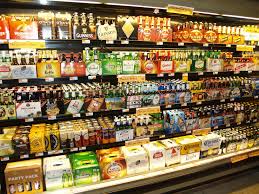 Stimulating growth in the food market is difficult for retailers and brand owners alike, but anecdotally it’s more difficult for the latter. Recent research shows it is only going to get harder.
Stimulating growth in the food market is difficult for retailers and brand owners alike, but anecdotally it’s more difficult for the latter. Recent research shows it is only going to get harder.
Food expenditure per capita Down Under is among the highest in the world – with Australia and New Zealand taking the third and fourth spots respectively behind Switzerland and Norway – leaving little room for expansion.
So while growth is always a business goal, there are a number of challenges to companies obtaining a bigger slice of the pie. These include the absence of traditional retail cycles since 2008, the increasing competition for consumers’ minds and wallets due to the rise of internet-connected devices, and a growing preference for eating out.
If shifts in consumption patterns aren’t enough to compromise in-home food growth, traditional retail cycles have been slow to re-emerge following the Global Financial Crisis (GFC). As disposable income growth rates declined, so did retail trade evolution – which had a much bigger impact than the prices of individual items being driven down.
While the period from 2002-2008 was a super-cycle of consumption, with retail growth rates doubling that of population and household growth rates in most segments, since 2008 this trend has reversed. Comparing volumes in the food sector, annual per capital increases hit 2.2% per annum compound from 2002-2008 but dropped to just 0.2% across 2008-2014. Similar growth declines were seen in all retail sectors – except ‘eating out’ food businesses where volume growth has accelerated.
THE WAY CONSUMERS SHOP HAS CHANGED
Adding to the food sector’s challenges, is a major shift in the way consumers shop. Australian consumers have become elusive and concerned about the economy, jobs, personal finances and health. They have started shopping less, with trips to grocery stores down 5% on the 2010 peak and now level with 2008.
At the same time, engagement with technology devices has rapidly increased. Time and money spent on smartphones and tablets has spiked and Australians now spend more than 24 hours per week connected to the internet – an increase of more than 70% since 2008.
Correspondingly, as consumers spend more time looking at screens, online shopping has risen dramatically. But while some of this time is spent on online grocery shopping, Nielsen’s Australian Connected Consumers Report shows 24% of those who shop online also buy food/groceries; this isn’t eliminating the impact of reduced shopping trips.
Over the past six years we’ve seen dramatic changes in the way Australians live and work – from economic to technological factors – impacting how we consume food. With at-home food expenditure already at peak levels compared to similar markets, we can expect that food retailers and brands will find it difficult to stimulate growth.
As expenditure builds in the ‘eating out’ food channels, some businesses will need to diversify. Companies who rely on at-home food purchases will need to optimise their efforts to attract customers and ensure their products get into trolleys, whether physically in-store or via virtual baskets online.

